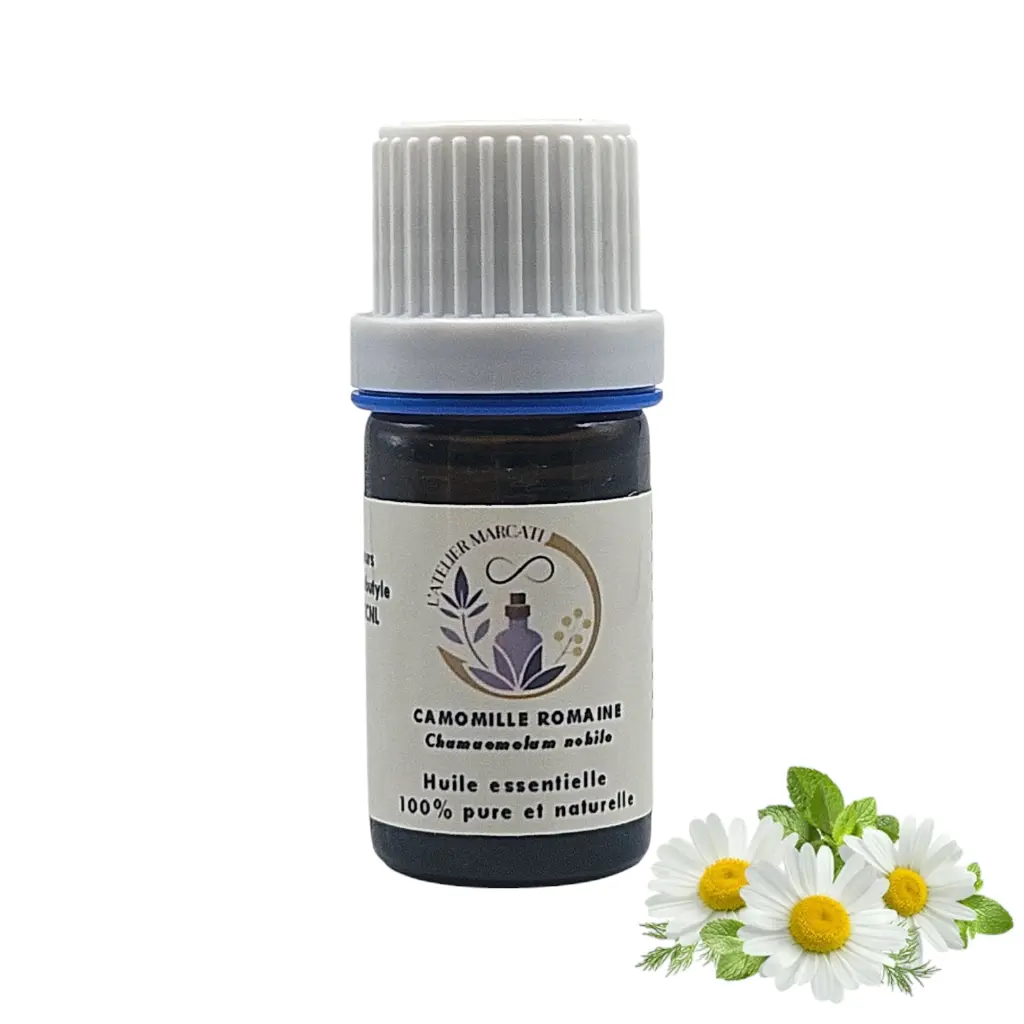Roman Chamomile or Noble Chamomile essential oil
Botanical name: Chamaemelum noble or Anthemis nobilis

Chemotype and indications
identity card
Name: Roman Chamomile or Noble Chamomile
Botanical name: Chamaemelum noble or Anthemis nobilis
Distilled part: Plant in full bloom of flower heads
Botanical family: Lamiaceae
Origin: France
Chemical composition:
- - Ketones: (Diones) Pinocarvone (13% )
- - Esters (75 to 80%)
- Lactone
- - Sesquiterpenols: Farnesol
Physical propertieAnti-inflammatory*s and therapeutic indications
- Anti-inflammatory**
- Antispasmodic
- Cardiac arrhythmia
- Asthma of nervous origin*
- CNS sedative**
- Eczema
- Neuritis*
- Neuralgia*
- Parasitosis (hookworm, lambliasis)**
- Intestinal parasitosis*
- Pre-anesthetic**
- Baby teething*
- Restless legs syndrome*
Emotional, psychological properties and therapeutic indications
- Calming*
- Nervous shock**
- Anger of children
- Stress
- Overwork
- Improves depressive states due to worries and feelings of fragility
- Nervous asthma
- Calms children's troubled sleep
- Hysteria
Additional information
MISCELLANEOUS: Sacred plant; it is one of the 12 sacred plants used by the Greeks
Dangers / Directions for use
Use for a short period of time due to risk of skin sensitization
At high doses:
* sweaty
*may cause excitement followed by depression
Suggestion to treat baby teething:
Apply: 1 drop 1 to 2 times/day following teething
Legend: * strong, ** very strong; *** extremely strong (strength value for associated pathology)
Reference and bibliographic source: Lily BAYER and Dr Hervé STAUB, (2013) “In-depth treatise on Phyto and Aromatherapy”, Ed. Grancher. p. 464.
INDICATIONS IN AROMATHERAPY AND THE USE OF ESSENTIAL OILS DO NOT CONSTITUTE A MEDICAL DIAGNOSIS AND DO NOT REPLACE THE ADVICE OF A DOCTOR OR MEDICAL TREATMENT!



